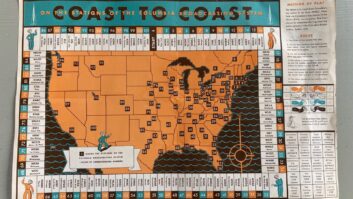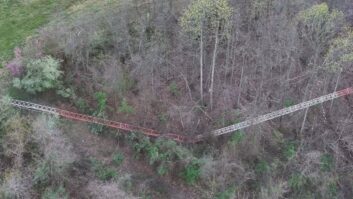The first-half radio revenue numbers from the Radio Advertising Bureau were not a pretty sight. Overall radio revenue fell 5 percent. In June alone, local and national revenue for all markets fell 10 percent, year over year.
One ray of sunshine was that in the first half, “off-air” or non-spot revenue was up 12 percent. RAB thinks off-air revenue will approach $2 billion annually by the end of this year.
So-called new media falls into that non-spot category. Steve Goldstein, executive vice president of Saga Communications and chairman of this year’s NAB Radio Show, said, “One of the visions I had was to develop a whole separate track for new media, so every time there are sessions going on, you can count on at least one panel” devoted to it.
In years past, new media has been touted as a kind of promised land, something that might contribute to the bottom line some day but was just another base that needed to be covered at present. However, a sampling of Radio Show new media session moderators and panelists indicates that new media tools are indeed contributing to radio’s revenues and profits.
“I think we’ve crossed that divide,” said Mike Agovino, chief operating officer of Triton Media Group, who will speak at the “New Media Executives Super Session” Thursday. The industry, he said, has gone from “where digital was more opportunistic and experimental to radio, to where the majority of operators are viewing it as a necessity.”
Agovino said time is of the essence for radio to ride the new media horse. He pointed to Borrell Associates research showing that in spite of radio’s own gains in NTR this year, overall local digital growth is up 20 percent. “From those numbers, I guess we’re losing market share on the digital side.”
Jim Kerr, vice president for digital development at the Pollack Media Group, will moderate “Creating Radio’s Interactive Future” on Wednesday.
“[Digital] is really where you live today. If you don’t live there, you should get there soon, because that land’s getting bigger while yours is getting smaller.”
Complementary business
So is it now time to judge new media by the money it brings in?
“This might be going too far, but money might be the only measurement,” said Jim Taszarek, president of TazMedia, who will moderate the “Local Web Sales Success Stories” panel Thursday. “Why have it if it’s not going to help us make money somehow?”
None of those who spoke with RW suggested tearing down the terrestrial radio antenna and selling it for scrap. That traditional radio signal and audience are radio’s advantages in the new media world.
“We still have ubiquity and the power of the pulpit, the loudspeaker, every day,” said Agovino. “So it’s up to us to build complementary businesses digitally or new business digitally around that power of the pulpit and our personalities, with the loyalty factors we’ve got with our audience locally.”
One such strategy is to develop listener clubs and other means to acquire a database of listeners.
Ruth Presslaff, president of Presslaff Interactive and a panelist on “Local Web Sales Success Stories,” suggested tactics for turning such a database from merely a list of names into a saleable asset.
“[What I’m talking about] is how to dive into your database and find people who are looking to do the kind of thing your client is trying to sell. Do you want to upgrade your kitchen? Do you want to buy a car? Are you looking to bet into a cellular service? Want to travel?”
An additional benefit of such listener clubs, she said, is “finding out who your listeners are so you can make appointments with them to listen to the station, to drive ratings, drive the incidence of listening, which will be huge in the CPM world.”
Zackary Lewis, founder and chief executive of Liquid Compass, who will present “Monetizing Your Streaming” on Wednesday, pointed to the ability of listeners to a streamed signal to immediately answer a call to action.
“Users of ad-replacement software can schedule a banner ad to appear simultaneously with the 30-second ad playing [in the Internet audio stream], where the listener can click on the advertisement to go to the offer.”
Lewis’ Web streaming strategy is part of a bigger picture about the differences between traditional radio sales and new media sales. Where traditional radio has sold on a cost per listener or CPM basis, Pollack’s Kerr said Web sales are based on some new acronyms.
“People are looking at things like CPA, or cost per action; CPC, or cost per click. In this kind of world, just delivering the eyeballs, or just delivering the ears, isn’t enough. People have to be intrigued enough by the advertisement to click through and see what the person is selling. If they don’t do that, you don’t make a penny.”
TazMedia’s Taszarek said new sales packaging is necessary for Web sales. “It’s got to be priced high enough to be worth the sales person’s attention. It’s got to be simple enough that the sales person instantly understands the value of it and is dying to show it to somebody, to an advertiser.
“The problem is that in many cases the seller doesn’t understand what we’re selling.”
Thus the predominance of panels on new media.
“It seems superfluous to have lengthy sessions on how the AC format is doing when all of this other stuff is out there,” said convention chair Goldstein.










